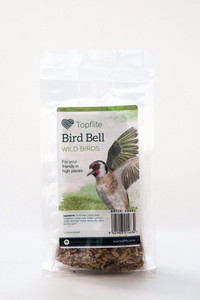
Is there a more iconic New Zealand sound than the call of a tūī?
To keep that famous dual voicebox singing with delight, we formulated Wild Bird Nectar to match the qualities of the native flower nectar that tūī feed on. Other sweet-tongues in the neighbourhood like korimako (bellbirds) and tauhou (waxeyes) love this all-natural golden blend too.
When flowers and berries are scarce, Topflite Wild Bird Nectar can supplement the natural diet of local native birds. On advice from experts we included specific vitamins and minerals to help birds stay in full flight all year round.
Did you know?
With finely tapered beaks shaped perfectly to fit the flowers, tūī, bellbird and waxeyes use their unusual brush-tipped tongues to lap up the nectar inside. Flights between flowers is why nectar-sipping birds are such important pollinators, and their berry-munching helps disperse native plant seeds around the place too.
Ingredients: Natural sugars, NZ dried honey powder, freeze-dried pollen, vitamin and mineral supplement.
Feeding Guide:
- Only ever put out Wild Bird Nectar in a clean, dry nectar feeder that’s specifically designed for native New Zealand birds
- Mix with the ratio of 1 part Nectar to 4 parts water; 1 cup of Nectar to 4 cups of water is about the right amount for most feeders
- Clean feeder with gentle soap and warm water before every refill
- Avoid offering nectar in open dishes due to the contamination risk
- Place feeder high and out of predators’ reach but close to native trees and shrubs (where possible)
- Place near other wild bird food sources. Larger native birds are more likely to visit a feeder already in use by their smaller feathered friends
- Patience, grasshopper – it can take a few days for birds to discover a new food source
- Where possible, plant native shrubs as long-term sources of natural nectar and berries
Cleanliness is important so clean and replace with a fresh nectar mix regularly. Topflite nectar can supplement the diet of nectar feeding birds throughout the year, particularly when there are no native fruits & flowers available for them to feed on.
What to do with this packaging:
Take it to a soft plastics recycling point or landfill (we’re working on a solution)
Available in:
500gm bag (sold individually)
2kg bag (sold individually)
5kg bag (sold individually)





